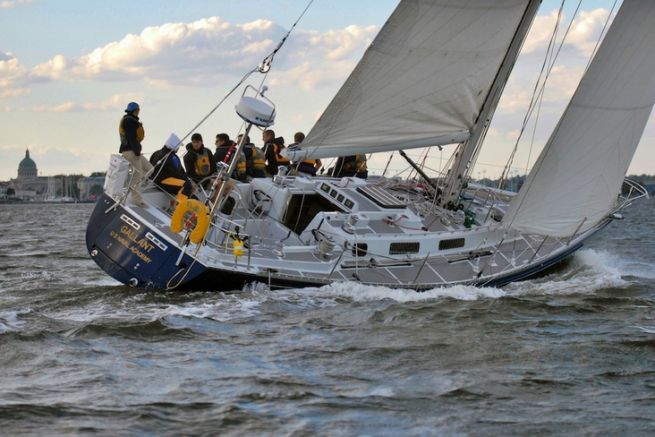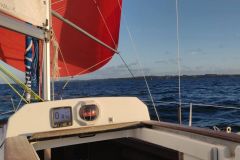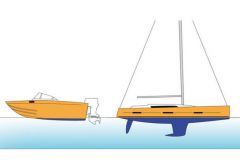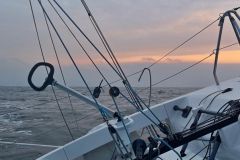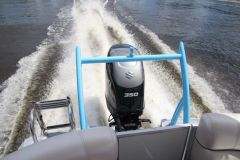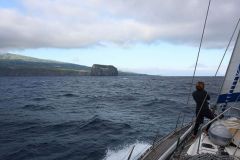The weight of a boat is a very important performance factor. For the same sailboat, the lighter it is, the less it will sink in the water. This reduction in wetted surface means fewer brakes on the boat.
Thanks to technical progress, rigs have become lighter over time. Without mentioning carbon masts, today's aluminum profiles hold up better and are lighter than those of 40 years ago. Sails and ropes have also become considerably lighter, and genoas made of Dacron or laminated materials are a thing of the past.
Reducing the weight in the topsides, and therefore lowering the center of gravity, enhances comfort by reducing pitching and rolling, making boats "stiffer to the canvas" than they used to be.
For regatta sailors, limiting the weight on board is a veritable priesthood, but it's also important when cruising. When, at the end of a fine day's sailing, the wind runs out of steam a few miles from the destination, it could be regrettable to start the engine because of misplaced excess weight.
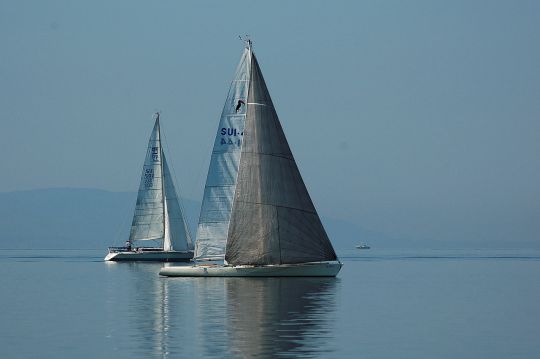
On-board deadweight
A boat is only as heavy as what you put on it. Obviously, when cruising, we take more than the minimum necessary. This is normal, since it's the "Aucazou" share of equipment. Over time, the weight accumulates in the form of successive layers of various objects of sometimes dubious interest.
It's time to take advantage of the seasonal refit to make an inventory, methodologically removing all items from the boat and assigning them a category. This sorting is rather subjective, but it does have the merit of asking questions:
1 -Useful and indispensable Ex: anchoring, rafting, a corkscrew.
2- Not essential, but useful Ex: the exterior upholstery, the hb engine, a good bottle of wine.
3- Useless and non-essential E.g.: used batteries, things lying around in trunks, a corkscrew without a bottle of wine
For cruising, we're particularly interested in the last category "Unnecessary and not indispensable which is already quite a lot. We can apply a rule like "If it hasn't been used for 2 seasons, we'll come in".
In regattas, we'll have to be much stricter, and we'll automatically ban the third category. We'll focus on the second "Not indispensable, but useful by asking before the regatta whether you can disembark the secondary anchorage, for example.
Once the boat is as light as possible, it's not over. We'll try to place the remaining weight as low and as centrally as possible. For example, we'll put the water packs and secondary anchorages around the keel rather than in an aft locker. This will lower the center of gravity and reduce the pitching moment.
The importance of crew
Quite naturally, when the boat heels over, everyone understands that it's useful to rappel into the lines. But resting your hips on the liston to windward and letting your legs hang over the hull is just the beginning.
Remember that the angle of heel has an effect on the boat's stability. When heeling, the boat spontaneously wants to go upwind. Conversely, when heeling against the wind, the boat simply wants to go downwind, a technique used in downwind regattas.
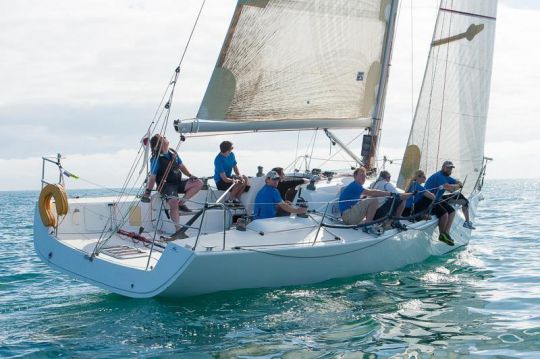
In light winds, most sailboats have a penchant for a few degrees of heel. You'll need to explain the importance of this to the crew, and ask them to heel the hull slightly to leeward. As the wind freshens, the crew's weight shifts to windward. Ideally, the crew should stay together as one.
After lateral balance, the next thing to consider is longitudinal balance, by looking at the bow. If it tends to stick out of the water, the whole crew should move forward. A final check of the bow: if it's sinking, move back a little.
It's fascinating to see how effective these few adjustments can be when cruising or racing.
